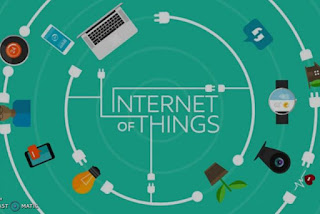The Internet of Things system has three levels.The first is the sensing layer, that is, using RFID, sensors, two-dimensional codes, etc. to obtain information of objects anytime and anywhere.
The second is the network layer, through the integration of various telecommunication networks and the Internet, the information of the object is accurately transmitted in real time.
The third is the application layer, which processes the information obtained by the sensing layer to realize practical applications such as intelligent identification, positioning, tracking, monitoring and management.
The Internet of Things refers to all kinds of information and sensing devices, such as sensors, radio frequency identification technology, global positioning system, infrared sensor, laser scanner, gas sensor and other devices and technologies, real-time collection of any need to monitor, connect, interact The object or process that collects a variety of information needed for its sound, light, heat, electricity, mechanics, chemistry, biology, location, etc., combined with the Internet to form a huge network.
Compared with the traditional Internet, the Internet of Things has its distinctive features.
First, it is a widespread application of various sensing technologies. A large number of sensors are deployed on the Internet of Things. Each sensor is a source of information. Different types of sensors capture different information content and information formats. The data obtained by the sensor is real-time, and the environmental information is periodically collected at a certain frequency to continuously update the data. Second, it is a ubiquitous network built on the Internet. The important foundation and core of the Internet of Things technology is still the Internet.
Also, the Internet of Things not only provides sensor connectivity, but also has the ability to intelligently handle intelligent control of objects. The Internet of Things combines sensors and intelligent processing, and uses cloud computing, pattern recognition and other intelligent technologies to expand its application areas. Analyze, process and process meaningful data from the massive information obtained by the sensor to adapt to the different needs of different users and discover new application areas and application modes.
Rather than saying that the Internet of Things is a network, it is better to say that the Internet of Things is a business and an application. They can be widely used in the following aspects:
1, the field of intelligent industry. Industrial production process control, production environment testing, manufacturing supply chain tracking, product life cycle testing and other IoT systems, forming an integrated management monitoring platform to promote economic efficiency, safe production and energy saving.
2, the field of intelligent agriculture. Fine-grained management of agricultural production, production of aquaculture environmental monitoring, agricultural product quality and safety management and product traceability and other Internet of Things systems, forming a quality agricultural product quality management platform to ensure the safety of agricultural products.
3, smart environmental protection field. Real-time monitoring of urban atmospheric environment, monitoring of key watersheds and lake water quality, real-time monitoring of industrial pollution source emissions, etc., forming a real-time monitoring and early warning platform for key regions and industries to improve environmental quality.
4, the field of intelligent logistics. The IoT system covering inventory monitoring, distribution management, and safety traceability will form a logistics public service platform across regions, industries, and departments to improve logistics efficiency and ensure the safety and control of logistics.
5, the field of intelligent transportation. Traffic state perception and exchange, traffic guidance and intelligent control, vehicle positioning and dispatch, vehicle remote monitoring and service and other Internet of Things systems form a real-time urban traffic monitoring and management platform to improve traffic management.
6, smart security field. Social security systems such as social security monitoring and monitoring of dangerous chemicals, form a monitoring and management platform for key regions and industries, and improve the informationization level of public safety management.






